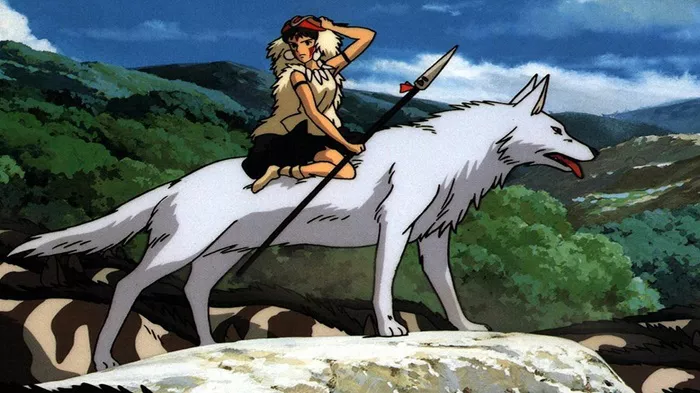Hayao Miyazaki’s “Princess Mononoke” is a landmark film in the world of animation, lauded for its intricate plot, deep themes, and stunning visuals. Released in 1997 by Studio Ghibli, it has since captivated audiences around the world, weaving environmental themes with complex character dynamics in a historical fantasy setting. While the film is often recognized for its messages about environmentalism and human progress, it also incorporates deeply emotional and arguably sad elements that permeate the story. This article examines whether “Princess Mononoke” is fundamentally a sad film, exploring its themes, character journeys, and the emotional responses it elicits from its viewers.
Understanding Sadness in Cinema
The Role of Emotional Engagement in Film
Before delving into the specifics of “Princess Mononoke,” it is important to understand how sadness functions in cinema. Films often evoke a spectrum of emotions to engage viewers, and sadness can be a powerful tool to create depth and resonance in a story. It connects audiences to characters and themes on a visceral level, allowing for a more profound appreciation of the narrative and its messages.
Defining Sadness in “Princess Mononoke”
In the context of “Princess Mononoke,” sadness is not just about the presence of sorrowful or tragic events; it is also about the tone, the choices characters make, and the film’s commentary on societal and environmental issues. The sadness in the film can be seen as a reflection of loss—of innocence, of nature, and of traditional ways of life.
Plot and Setting: A World in Conflict
The Historical and Mythical Framework
“Princess Mononoke” is set during the late Muromachi period in Japan, a time characterized by social upheaval and conflict. This setting provides a backdrop that reflects the themes of the film—particularly the tension between industrial progress and nature. The introduction of ironworking and the consequent deforestation and devastation of natural habitats sets the stage for a narrative steeped in loss and melancholy.
Key Events That Drive the Narrative’s Sadness
Several key events in “Princess Mononoke” underscore its sad undertones:
The Curse of Ashitaka: The protagonist, Ashitaka, is cursed by a demonized boar god, a direct consequence of human encroachment on nature. His quest to find a cure leads him into a larger conflict, highlighting themes of suffering and the relentless march of progress.
The Fate of the Forest Spirits: The forest spirits, including the Great Forest Spirit, represent the natural world in its purest form. Their endangerment and, in some cases, death symbolize the profound loss and irreversible damage caused by human actions.
San’s Struggle and Isolation: San, the human girl raised by wolves and the titular Princess Mononoke, embodies the conflict between the human and natural worlds. Her sadness and isolation are palpable, as she cannot fully integrate into either world.
Characters: The Personification of Sadness
Ashitaka’s Journey of Sorrow and Discovery
Ashitaka’s character arc is a poignant exploration of the burden of knowledge and the pain of seeing the world in all its brutal reality. His journey from his cursed village to the industrial Iron Town and the contested forest lands brings him face-to-face with the complexities of human nature and the harsh consequences of industrial progress.
San, the Tragic Heroine
San is perhaps the most tragic figure in the film. Caught between two worlds, her fierce defense of the forest against human destruction is driven by a palpable sense of desperation and sadness. Her inability to prevent the conflict and her struggle with her identity highlight the inherent sadness in her existence.
Themes: The Heart of Sadness
Environmental Degradation and Loss
At its core, “Princess Mononoke” is a meditation on the environmental cost of human development. The visual depiction of the spoiling of pristine landscapes and the sorrowful demise of the forest spirits serve as a mournful commentary on real-world environmental destruction.
The Inevitability of Change and Loss
The film also addresses the theme of inevitability. Despite the efforts of Ashitaka and San, change is inevitable—both in terms of the natural environment and the societal structures around them. This inevitability is a source of sadness throughout the film, as it underscores the limits of individual agency within larger historical forces.
Conclusion
Is “Princess Mononoke” sad? The answer is nuanced. While not overtly tragic or focused solely on eliciting tears, the film is imbued with a deep-seated melancholy that arises from its exploration of significant and weighty themes. The sadness in “Princess Mononoke” is a poignant reflection of the real-world issues it mirrors—environmental destruction, cultural loss, and the personal toll of societal conflict. Through its complex characters and their emotionally charged journeys, the film offers a powerful examination of sadness as an inevitable response to the world’s imperfections and the painful growth that comes from confronting them.
In conclusion, “Princess Mononoke” uses sadness not just to evoke emotional responses but to enrich its thematic depth and highlight the complexities of the human condition. It challenges viewers to reflect on their own interactions with nature and each other, making it a timeless piece that resonates with profound emotional and ecological relevance.

